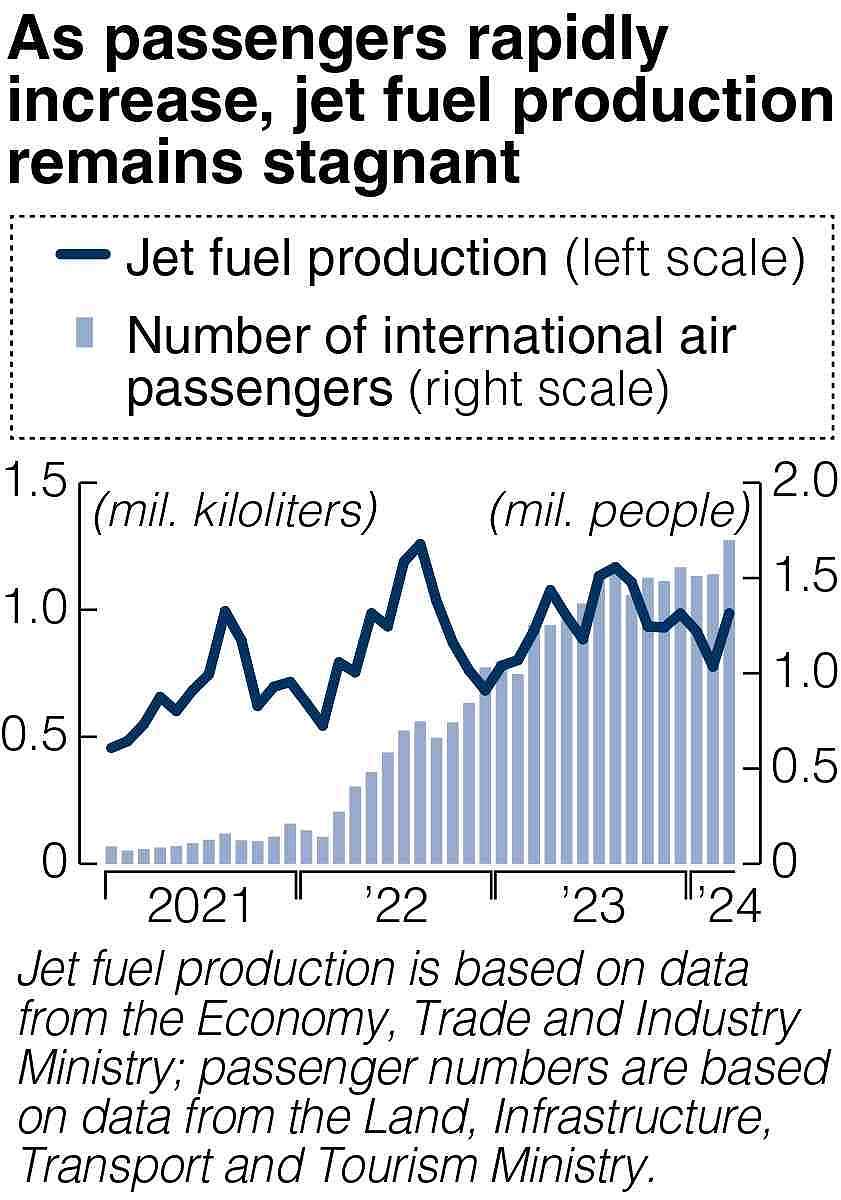A plane is refueled at Haneda Airport in Tokyo.
14:13 JST, June 29, 2024
A shortage of jet fuel is leaving airports across the country in a tight spot, especially regional airports.
Some airports have been forced to abandon plans for new routes and increasing the number of flights on existing routes due to a lack of fuel, and some are seeing delays in receiving fuel shipments.
As demand for international flights increases and travel to Japan quickly recovers, the government has rushed to take countermeasures. However, the structural factors underlying the problems mean that the fuel shortage could hamper the country’s bid to become a top tourist destination.
Emergency measures discussed
On June 18, the first meeting of a council made up of members from both the public and private sectors took place to discuss the issues surrounding the fuel shortage.
“As we try to attract foreign visitors to areas outside major cities, the situation is even more serious than before,” said Kyoji Kuramochi, head of the Aviation Network Department of the Ministry of Land, Infrastructure, Transport and Tourism.
The meeting was attended by officials from the Department of Transportation and the Natural Resources and Energy Agency, as well as representatives from airlines and oil wholesalers, among others. They began discussing emergency measures to address the problems.
Fuel shortages are already starting to cause problems at airports across Japan.
At Hiroshima Airport in Hiroshima Prefecture, a foreign airline reported in May that it was unable to obtain fuel in Japan, making it difficult to complete a plan to expand flights to the airport.
At Hokkaido’s Obihiro Airport, some foreign airlines, including Korean Air Lines Co., had to cancel plans for charter flights in July and August because they could not buy fuel in Japan.
Increasing the number of international flights offers regional airports a valuable opportunity to attract more foreign tourists to their areas. “The fuel shortage is causing serious damage to our economy,” said a Hiroshima Prefecture official.
Drops of more than 30%

Jet fuel, like gasoline, is one of the many products of the crude oil refining process. However, in recent years, demand for gasoline and other petroleum products has declined due to the progress of energy-saving measures and decarbonization of the economy. As a result, jet fuel production is declining, with production in March more than 30% lower than five years ago.
Oil wholesalers are accelerating their efforts to consolidate and reduce the number of refineries. At their peak in 1983, these groups operated refineries at 49 locations, but by June that number had fallen to just 20. As a result, fuel must travel farther to reach airports. But labor shortages are making it difficult for both maritime and land transport operators to respond flexibly to the situation.
In March, the number of international air passengers reached 1.69 million, which was more than 80% of the number in March 2019, before the outbreak of the COVID-19 pandemic. The brisk passenger demand is leading to a high demand for aviation fuel.
Both ships and employees
Major oil wholesaler Eneos Holdings, Inc. is now turning down new requests for jet fuel supplies from some airlines and airports, citing a tight market. While the company is considering increasing jet fuel production, it must also address other issues. “We not only have to deal with production, but also with transportation of the fuel and airport workers to refuel,” a public relations official said.
The government has set a target of replacing 10% of the fuel used by domestic airlines with Sustainable Aviation Fuel (SAF) by 2030. But there are also problems with this next-generation fuel, including high costs and low production volume.
As the government aims to increase the number of foreign visitors to Japan to 60 million by 2030 – more than double the number in 2023 – it will rush to address these problems.



